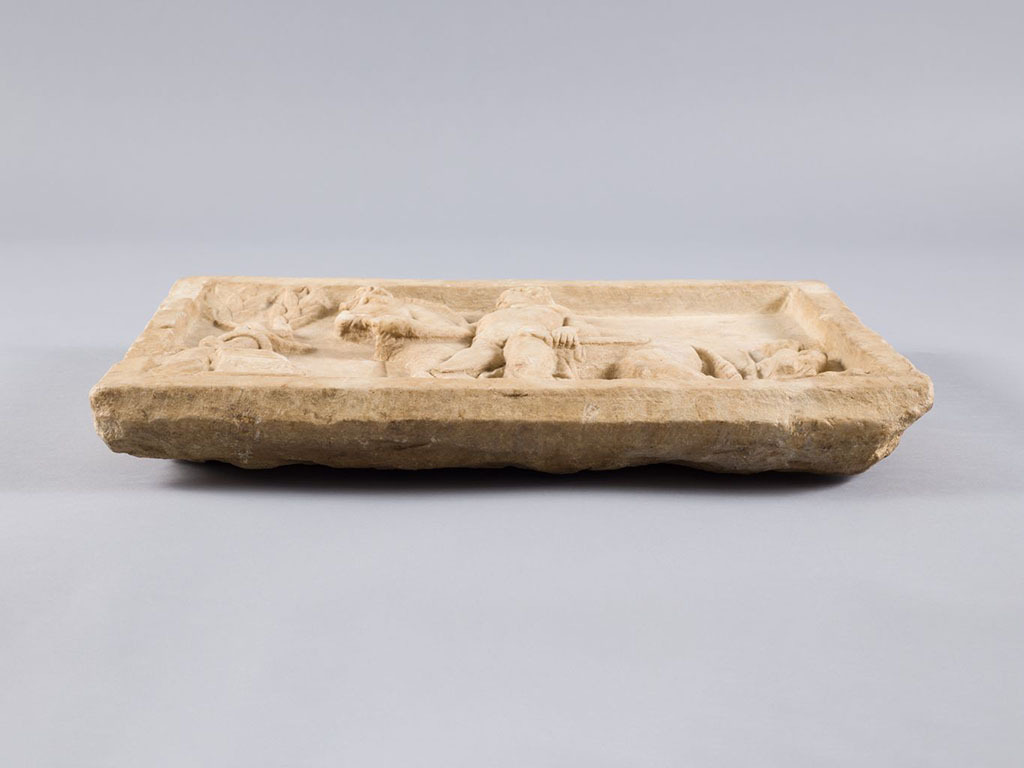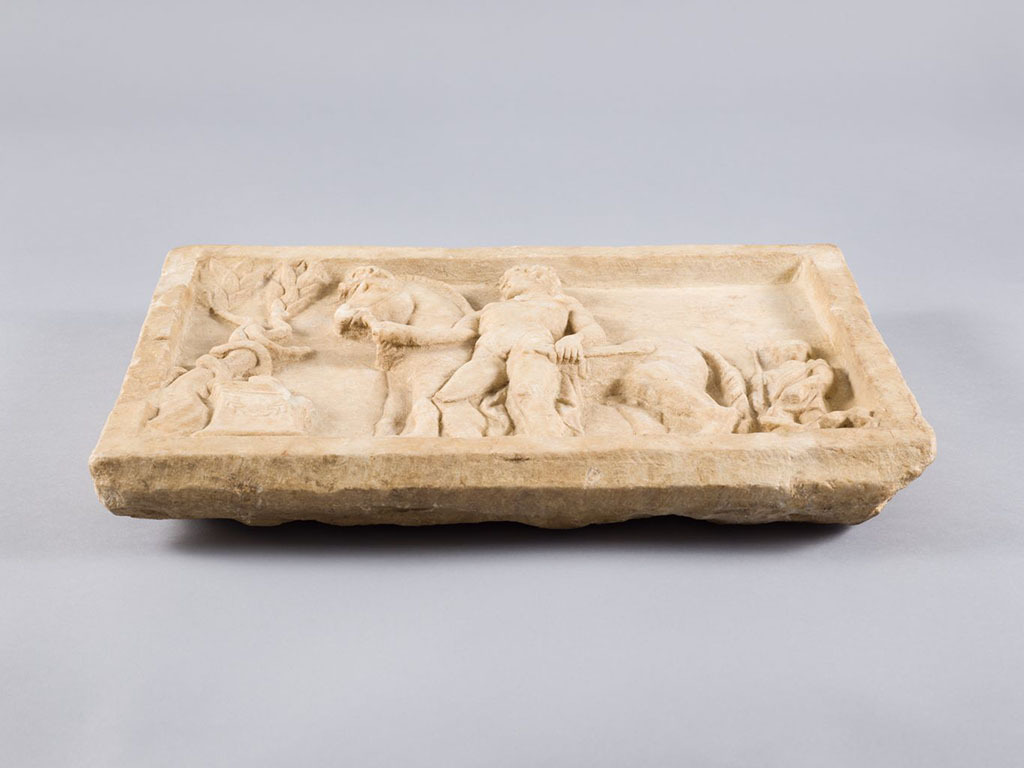Figural reliefs such as this one were commonly used as tombstones in sanctuaries throughout the Greek world. Its layout is similar to Ionian Greek funerary markers used in areas of Turkey, possibly around ancient Smyrna. Certain features indicate that the relief belongs to the Hellenistic period (323–30 BCE).
A central heroic figure is represented utilizing older artistic conventions in a new composition. Overall, the arrangement featuring a hero with horse, altar, and snake-entwined tree on one side and small boy with hunting dog was popular in the 3rd century BCE. In one hand the principal figure holds his sword, which is safely sheathed in its scabbard to indicate there is no immediate danger, and leads his horse to an altar with the other hand. Drawing on Classical (480–323 BCE) Greek sculpture models, he stands with his weight primarily on his left leg with his right leg bent, which produces a pronounced S-curve in his overall body position. The relief also draws on Classical models by emphasizing the defined iliac crest and pectoral muscles of the figure. The cloak pinned at his neck drapes down his back and emphasizes his heroic nudity, a common motif in Greek art of the Archaic (600–480 BCE) and Classical periods.
Features of the relief belonging to the Hellenistic period include the short, curly hair of the figure and the braided mane and tail of the horse. The type of cylindrical altar belongs to the Hellenistic period as well. It is decorated with a wreath and surmounted by a flame. Such altars typically were used to burn offerings like incense. Next to the altar, a snake twines through the branches of a tree, which is a motif common in Hellenistic funerary reliefs. Snakes were believed to be associated with the underworld and could represent the soul of the dead. To the right of the scene, the smaller male figure, dressed in a short-sleeved tunic, rests a spear casually against his right shoulder and holds a hunting dog’s leash in his left hand. Although his face has been damaged over time, it is clear he does not look towards the central figure. The separation between the two in terms of scale, attire, body position, and gaze may indicate a division between the living and dead. The smaller scale of the figure could emphasize the age difference between the two figures, but it was also used in ancient art to indicate differential status. He could be a squire, servant, or possibly even a slave.



